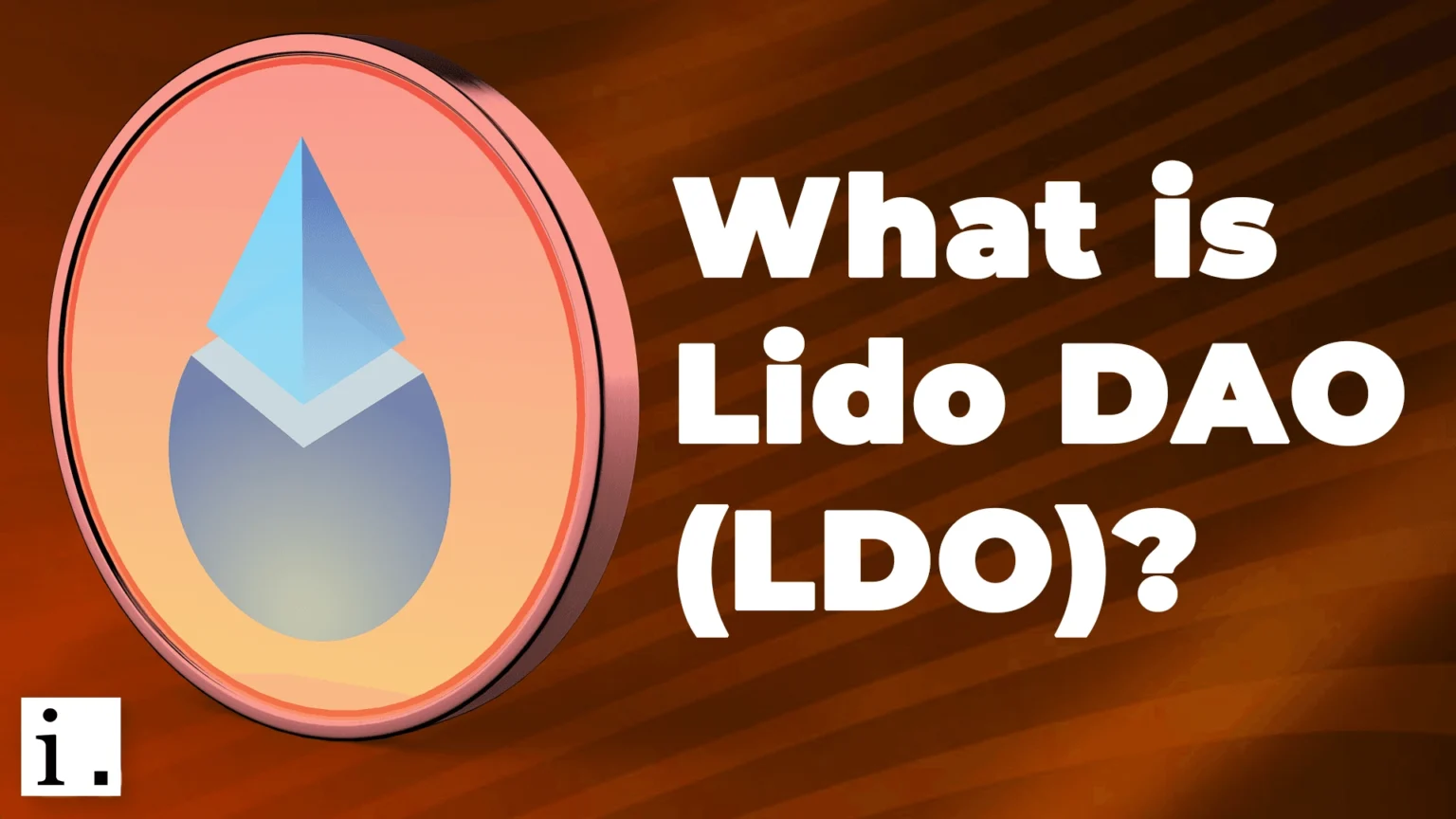Lido DAO is a decentralized autonomous organization (DAO) that facilitates staking on proof-of-stake blockchains, with its primary focus on Ethereum. Staking is the process where cryptocurrency holders lock up their assets to help maintain the network’s security and operations, in exchange for rewards.
Lido DAO offers a solution to the common problem of liquidity that comes with staking. Instead of locking up tokens for extended periods, Lido allows users to stake Ethereum (ETH) and receive stETH (staked ETH) tokens in return. These stETH tokens represent the staked Ethereum and can be used within the DeFi ecosystem, offering both staking rewards and liquidity.
Lido’s decentralized model means that anyone can participate in the staking process without needing to run their own validator node, making staking more accessible to the broader crypto community.
Lido DAO (LDO) Price Prediction for 2025
Lido DAO (LDO) has experienced significant growth since its inception. As of 2023, the price of LDO has risen steadily due to the increased adoption of staking solutions and Ethereum’s transition to PoS. Moving into 2025, several factors are likely to influence the price of LDO:
Key Factors Affecting LDO Price:
- Ethereum’s Continued Transition to Proof-of-Stake: Ethereum’s shift to PoS, along with the increased demand for staking, will continue to benefit Lido DAO, as it remains one of the dominant staking providers.
- Growth of Decentralized Finance (DeFi): Lido DAO’s deep integration with the DeFi ecosystem means it will benefit from the growing interest in DeFi applications. As more users interact with DeFi platforms, the demand for staking services like Lido’s will rise.
- Expansion to Other Networks: Lido DAO has expanded beyond Ethereum to support other proof-of-stake networks like Solana, Terra, and Polkadot. This diversification will help increase the protocol’s user base and improve the LDO token’s price outlook.
- Partnerships and Integrations: Future collaborations with major DeFi protocols or exchanges could drive LDO’s value, as increased adoption of staking solutions will bring more demand for the token.
- Regulatory Impact: Regulations surrounding staking and DeFi could have both positive and negative effects on Lido DAO. Clearer regulations could foster more institutional involvement, while stringent regulations could limit the growth of staking protocols.
Price Prediction for 2025:
Considering the factors above, experts predict that LDO could reach $25 – $35 per token by the end of 2025. The price could be driven by a combination of Ethereum’s PoS success, the rise of decentralized staking platforms, and increasing DeFi participation.
Future Trends for Lido DAO in 2025
Lido DAO is at the forefront of the decentralized staking movement, and its influence will continue to grow over the next few years. Here are some of the key trends that we expect to see for Lido DAO in 2025:
- Decentralized Staking Becoming the Standard: As more users migrate to decentralized platforms for staking, Lido DAO will benefit from the growing demand for liquid staking solutions. It’s likely that decentralized staking will become the norm, and Lido DAO’s position as a leading provider will solidify.
- Integration with More Blockchains: Lido DAO’s ecosystem will continue to expand to other networks beyond Ethereum, such as Solana, Terra, and Polkadot. These integrations will bring more users to the platform and create a more diverse staking offering.
- Increased Token Utility: The LDO token is primarily used for governance within the Lido ecosystem. In the future, LDO could have additional utility, such as being used to pay for transaction fees or providing access to exclusive features on the platform.
- Improvements in Staking Efficiency: Lido DAO will likely improve its staking mechanisms to further optimize rewards and reduce the risk for users. This could include offering staking options for more networks and providing more advanced staking strategies.
- Institutional Adoption: As institutional interest in DeFi grows, more large-scale investors may use Lido DAO’s staking services, potentially leading to greater liquidity and higher demand for LDO tokens.
Pros and Cons of Lido DAO (LDO)
Pros:
- High Liquidity: Lido offers liquidity to staked assets, unlike traditional staking methods, allowing users to maintain flexibility while earning staking rewards.
- Low Barrier to Entry: Users don’t need to run a validator node, making it easy for anyone to participate in staking without technical expertise.
- Diversification: Lido supports multiple proof-of-stake networks, allowing users to diversify their staking portfolios.
- Governance Participation: LDO token holders have a say in important decisions regarding the protocol’s future, which ensures decentralization and community-driven growth.
- Security and Transparency: Lido is a trusted platform with a track record of secure staking services, offering transparency through regular audits and third-party verification.
Cons:
- Dependency on Ethereum: While Lido DAO supports multiple blockchains, its main value proposition is tied to Ethereum, which means its success is closely tied to Ethereum’s success.
- Potential Regulatory Risks: As the DeFi space becomes more regulated, Lido DAO may face legal and regulatory challenges, which could affect its operations.
- Smart Contract Risks: Like all DeFi protocols, Lido DAO is susceptible to smart contract vulnerabilities, which could expose stakers to risks.
- Fees: While lower than traditional methods, staking through Lido involves platform fees, which can eat into the rewards.
Frequently Asked Questions (FAQs)
1. What is Lido DAO (LDO)? Lido DAO is a decentralized autonomous organization that facilitates staking on proof-of-stake blockchains, offering a liquid staking solution for assets like Ethereum.
2. How does Lido DAO work? Lido allows users to stake their Ethereum or other supported tokens and receive a staked version (such as stETH) in return. These staked tokens can then be used in DeFi applications.
3. What is the LDO token? LDO is the governance token for Lido DAO. It allows holders to participate in decisions regarding the platform’s development and management.
4. Is Lido DAO safe? Lido DAO has a solid track record in the DeFi space, but, like any DeFi protocol, it is exposed to potential risks from smart contract vulnerabilities and regulatory challenges.
5. Can I stake any token on Lido DAO? Currently, Lido supports several proof-of-stake networks, including Ethereum, Solana, Terra, and Polkadot, with more expected in the future.
Conclusion
Lido DAO (LDO) is poised to continue its growth in the DeFi and staking space as Ethereum and other proof-of-stake blockchains rise in popularity. With its liquid staking model, Lido DAO has revolutionized how users interact with staked assets, providing liquidity while still earning staking rewards.
As the DeFi landscape evolves, Lido DAO’s integration with other blockchain networks and the potential for increased institutional adoption makes LDO an attractive asset for 2025 and beyond. While the price prediction suggests significant growth, potential risks related to regulation and smart contract vulnerabilities should be kept in mind.
Lido DAO’s future is bright, but, like all crypto projects, it’s essential to stay informed and assess the risks before investing.
Disclaimer
This article is for informational purposes only and does not constitute financial or investment advice. Always perform your own research and consult a financial advisor before making investment decisions in the cryptocurrency market.



